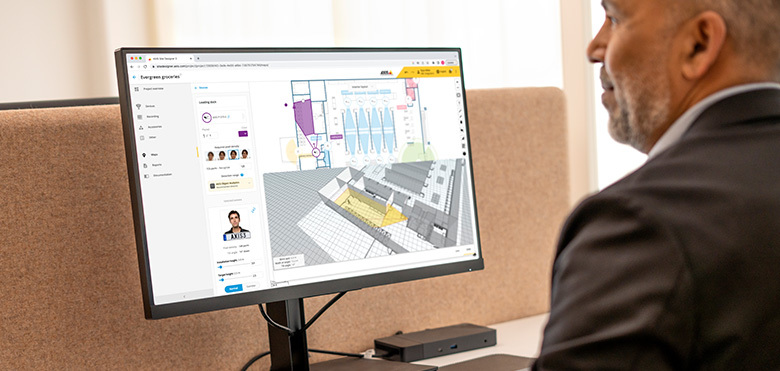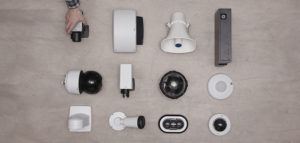How using the right tool will enable more efficiencies in security solution design and installation
Reducing the time between an organization identifying what it needs from a security solution to having that system not only operational, but also configured for optimal performance, is a clear benefit to both the end customers and systems integrators. Using a system design tool that integrates every aspect of the design process offers a way to save a lot of time.
Here we consider how an intuitive system design tool can help system integrators easily create the right solution to fit the exact operational requirements and needs of a customer, while making projects faster to create, revise, and implement.
Designing a security solution has many challenges. After understanding the customer’s use case and operational requirements, the right products should be found to meet those requirements. Camera placement and coverage needs to be planned. Storage requirements must be estimated, and servers selected. Finally, a proposal is compiled from all this information to present an offer.
A system design tool, such as AXIS Site Designer, will help you all the way through this process. Instead of browsing web sites, using product selectors, reading data sheets, and manually creating a system proposal, you use the tool as a one-stop-shop that supports all aspects of the system design, including keeping the design documented.
Capturing the requirements
A convenient way a system design tool can be used is on mobile tablets and laptops. The specific requirements can then be inputted on site in direct collaboration with the customer to find the best solution and meet the customer’s needs. Floorplans of buildings can be uploaded, with cameras and other devices dragged and dropped into the design, immediately showing coverage (as well as blind spots) using different types of cameras.
Being able to work with camera placement and coverage from within the design tool makes it easy to clearly present the proposed solution and create an understanding how the design fulfils the requirements, all without having to resort to using additional CAD tools.
Get recommendations to meet customer needs
In all surveillance installations the camera is the key component. However, finding the right camera while taking into consideration both price and performance can be challenging. A good system design tool will help find the correct device for each use case and requirement. In relation to cameras, this could for example be automated recommendations for models that deliver the level of forensic detail needed in different areas of a building or site, models that work particularly well under challenging light conditions, or models that meet other customer requirements.
In addition, it is increasingly important for many customers to design a solution with sustainability in mind. Again, a design tool can support this by, for instance, specifying cameras that meet certain criteria, such as being free from PVC plastics or using recycled materials.
An additional benefit of a system design tool can be automatically highlighting the options for mounting and installing the specific products. For instance, if the customer wants to install in the ceiling, having a tool that can provide a selection of appropriate mounts. Again, this not only saves a tremendous amount of time, but ensures that the entire solution is accurately specified with a complete bill of materials. And with surveillance cameras being installed in an increasing variety of environments, the ability to choose the most aesthetically pleasing option within the design tool is another advantage.
An integrated system design tool will make it easy to respond to changes requested in discussions with the customer. When a part of the design changes, all related elements within the design will be automatically updated. This includes products, accessories, and mounts.
Beyond the cameras themselves, an intuitive system design tool also makes storage estimations based on the cameras specified, resolution required, and recording settings.
The tool enables you to determine how much storage will be needed and add the relevant number of recorders, servers, and switches. You can experiment with selecting different camera models and adjusting camera settings to find the optimal storage products to meet project requirements.
The solution quotation can be generated within the design tool itself, once again saving time creating a system proposal. Being that the design tool keeps track of all selected products, any changes made in discussion with the customer will be easily updated within the design with a few clicks. This ensures that the documentation and proposal stays accurate and up-to-date.
Once the solution has been determined, and it is time for installation the tool can then create the configuration specification for the solution and output the installation instructions. Ultimately, the tool can be used to help ensure a smooth and successful installation.
Gathering the customer needs all in one place
Efficient system design begins with the right tool. Having the right design tool can help system integrators and consultants recommend the optimal surveillance solution for each customer and find the right products from an extensive product portfolio. This includes camera, recorders, and accessories, as well as turning the design into detailed installation instructions, and so turning the customer’s needs into a complete solution.
A good system design tool integrates all aspects of the design process and keeps the design documentation up to date as the project evolves. As a result, it will create a time saving, accurate and transparent way to help design and install the customer’s solution.
Find out more about AXIS Site Designer here:



